TWO-STROKE: FMF’S KX500/KTM 250SX HYBRID
THE DECISIONS ON BUILDING A 500cc TWO-STROKE DREAM BIKE:
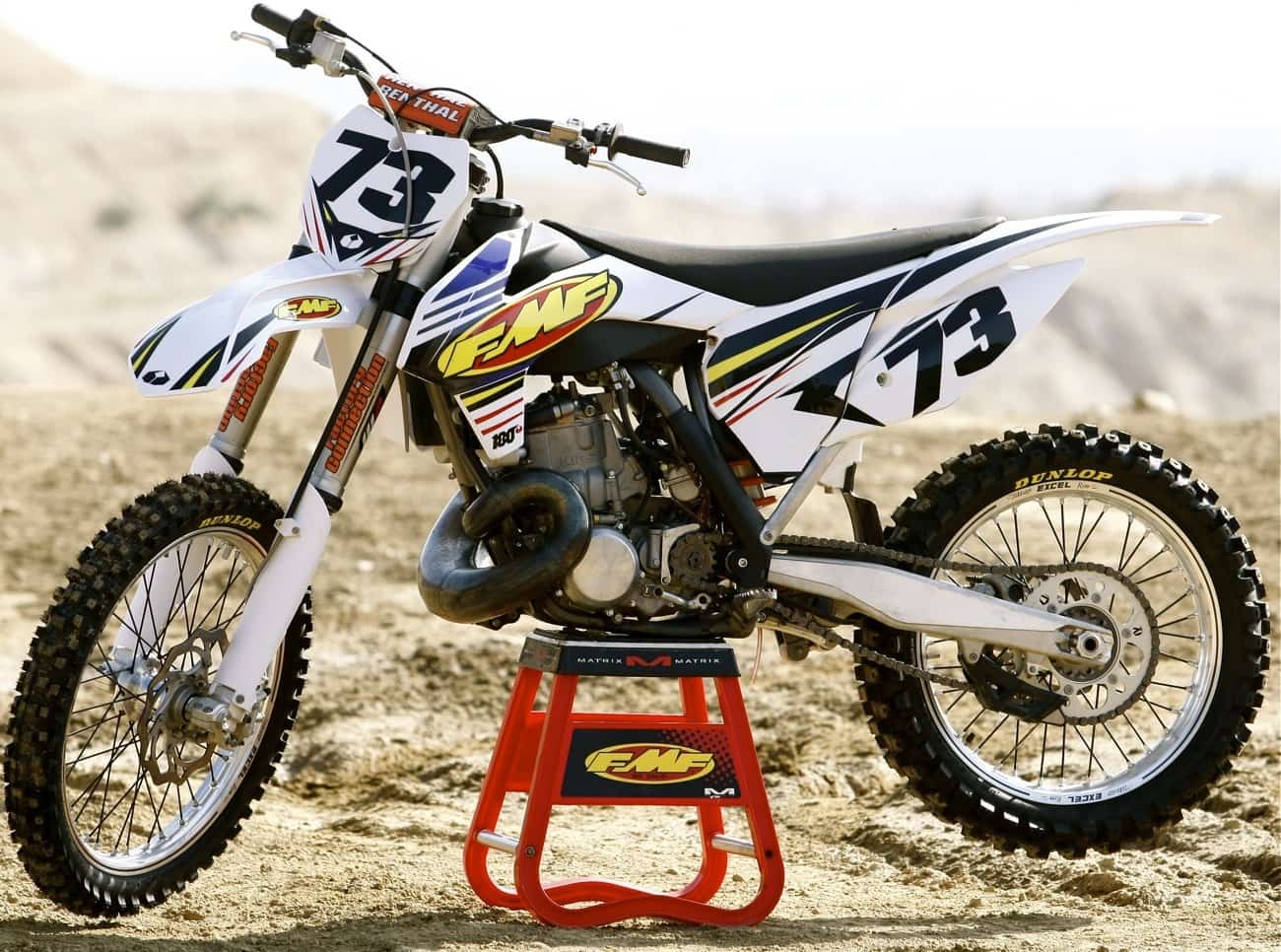 The absolute best project bikes are the ones that look like they rolled out of the factory. FMF’s KTM/KX500 hybrid fits the bill.
The absolute best project bikes are the ones that look like they rolled out of the factory. FMF’s KTM/KX500 hybrid fits the bill.
ALUMINUM FRAME OR CHROMOLY?
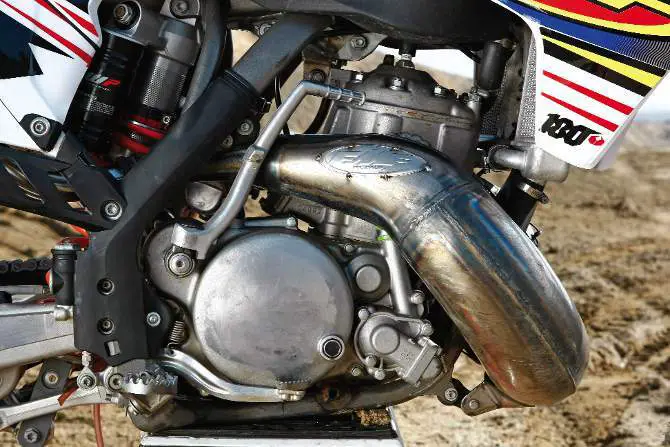 Donny Emler from FMF knows a thing or two about exhaust pipes, so shoehorning a big expansion chamber in was no sweat.
Donny Emler from FMF knows a thing or two about exhaust pipes, so shoehorning a big expansion chamber in was no sweat.
(1) Frame. The first hard decision is choosing between an aluminum Delta-Box frame from an existing four-stroke or a chromoly steel KTM chassis. A few years ago, the first choice would have been a CRF or KX250F four-stroke frame. They were considered the epitome of modern design. But, as of late, KTM’s oval-tube, chromoly steel frame has begun to overshadow the rigid Delta-Box design. Not only does KTM’s steel frame handle very well, it has more room for the engine of choice and can be cut, chopped and welded with ease. Decision made: 2013 KTM 250SX frame.
HONDA OR KAWASAKI?
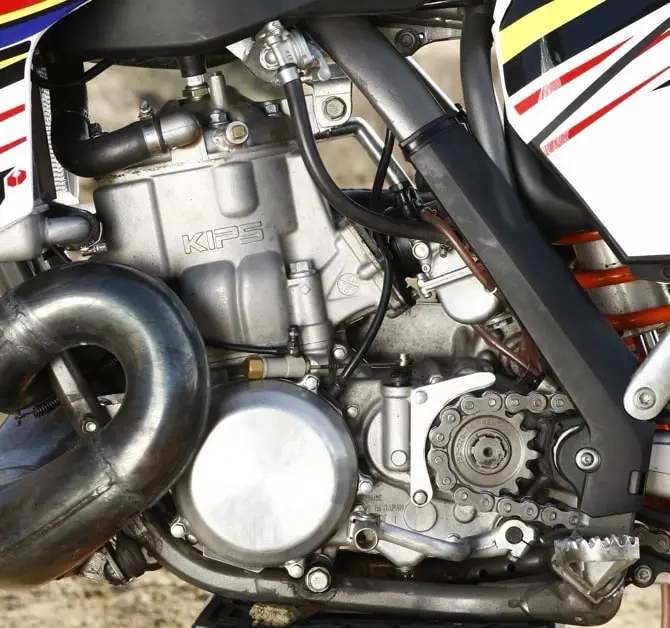 The only welding required to squeeze the 2004 Kawasaki KX500 engine into the 2013 KTM chassis was to the bottom motor mount.
The only welding required to squeeze the 2004 Kawasaki KX500 engine into the 2013 KTM chassis was to the bottom motor mount.
(2) Powerplant. Choosing a 500cc two-stroke engine is as simple as ordering Chinese food. You select one from column A or one from column B. In column A is the venerable Honda CR500 engine, and in column B is the equally venerable Kawasaki KX500 engine. The Honda CR500 engine was last produced in 2001, but parts are readily available, and it has a great reputation left over from its days as the engine of choice of Jeff Stanton, Jean-Michel Bayle, David Bailey and Rick Johnson. On the other hand, the last KX500 engine rolled off the assembly line in 2004 and is actually a better all-around powerplant than the CR500 engine. It has a broader powerband and more controllable output. The reason it gets less publicity than the Honda CR500 engine is because the KX500’s suspension, layout and ergos were less suited to motocross than the Honda’s. Decision made: 2004 Kawasaki KX500 engine. Not every rider has the same dream, but the MXA wrecking crew ran into two industry powerhouses who did share the same vision and were doers more than dreamers.
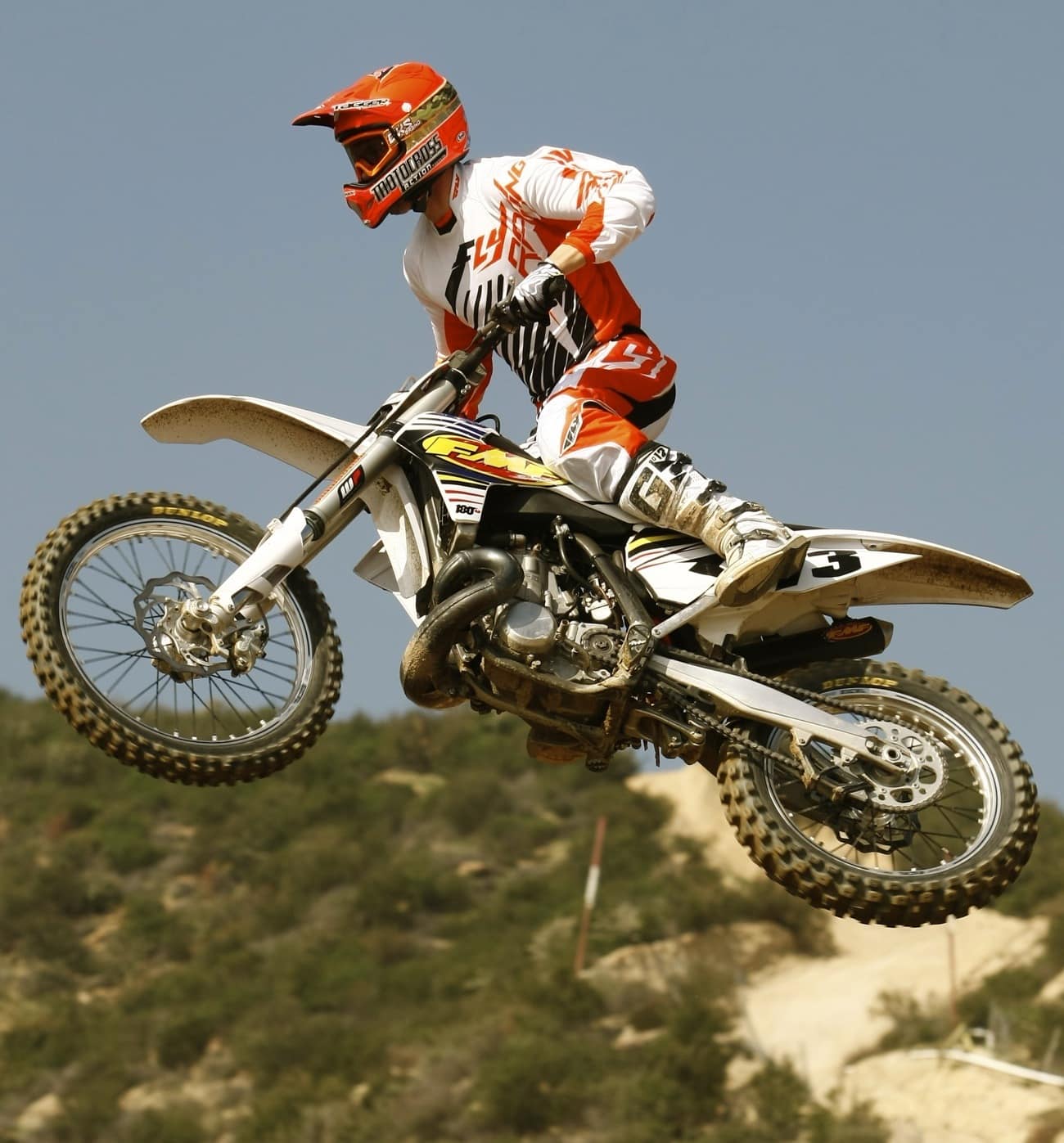 You haven’t flown until you fly Air 500. Big doubles are no trouble when you have a 500cc two-stroke under you.
You haven’t flown until you fly Air 500. Big doubles are no trouble when you have a 500cc two-stroke under you.

A year ago, FMF’s Donny Emler and former 250 World Champion Danny LaPorte had the same conversation we just discussed. And, unlike most bench racers, they decided to make the dream a reality. Danny had raced the Baja 500 for Team Kawasaki and believed that a KX500 engine could still win Baja if it were in the right chassis. Donny and Danny decided to go with a used KTM 250SX chassis, plus its suspension, running gear, wheels and brakes. They chose it because they liked the way it handled, and they liked that the chromoly steel could absorb some of the heavy vibes of the KX500.
HOW TO SHOE-HORN A KX500 ENGINE INTO A KTM CHASSIS IN 3 STEPS
Once they chose the engine and the chassis, the daunting task of putting the two together began, except that it wasn’t a daunting task. Danny LaPorte says, “When we first looked at the Kawasaki engine and the KTM frame, we didn’t think it would fit in there, but we were wrong. The first time we set our rebuilt KX500 engine into the KTM frame, we realized it was going to be the easiest engine swap ever.” It didn’t hurt that Danny’s partner on the project, Donny Emler, had built his reputation back in the glory days by swapping out Honda and Penton parts to build great 125cc race bikes.
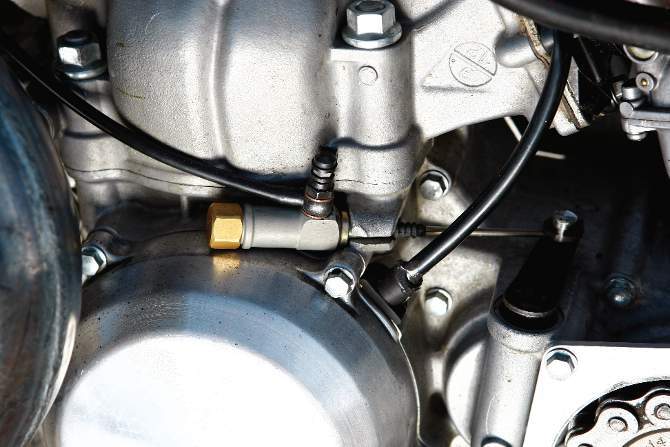 The KTM chassis had a hydraulic clutch lever, so a Magura hydraulic clutch actuator was added to the KX500 engine.
The KTM chassis had a hydraulic clutch lever, so a Magura hydraulic clutch actuator was added to the KX500 engine.
Step one: To get the KTM swingarm pivot bolt through the Kawasaki KX500 engine cases, the cases were center-bored. Emler elected to bore the cases just a few thousandths larger than the KTM pivot bolt to get as snug a fit as possible. The swingarm pivot bolt is the only fixed position on the engine swap. To line up the countershaft sprocket and rear KTM sprocket, a 6mm spacer was machined to push the engine over to the side. This was a simple task, because the KX500 engine cases were narrower than the space between the KTM frame’s down rails.
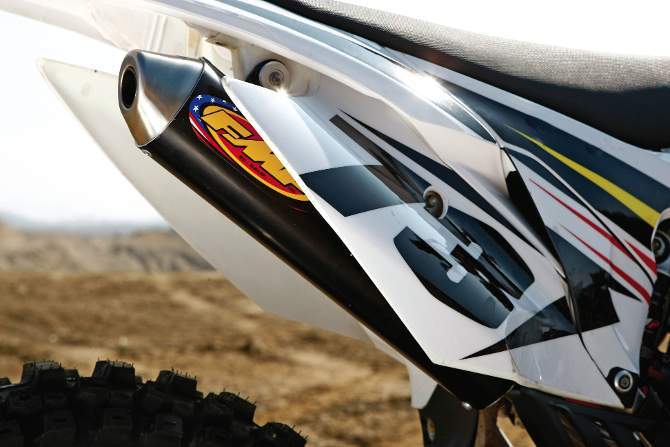 Finding the right muffler was no problem. FMF went through their KTM two-stroke inventory and voila!
Finding the right muffler was no problem. FMF went through their KTM two-stroke inventory and voila!
Step two: To get the crank as low as possible, Donny and Danny decided to do whatever was necessary to get the engine cases as low as possible in the KTM frame. To accomplish this, they notched the frame cradle tubes under the engine and welded chromoly tubes into the notches to accept the bottom motor-mount bolts. They went as low as they could go and still have tubing left under the frame cradle, but the actual position was determined by simple logic. They put the bottom motor-mount bolts in the spot that made the embossed Kawasaki logo on the clutch cover level. Additionally, they had to dent one frame cradle tube to get access to an engine-case bolt.
Step three: The final task was to fabricate new front motor-mount plates and a head stay. The rest of the build was basic problem-solving for the coil, intake tract, reed valve and shift lever. Danny and Donny insist that the engine swap was easy as pie and, by engine-swap standards, this is true. But, no mechanic ever tells you the whole story. They conveniently forget their frustrations and head scratchers.
Now you can go out and build your own monster KTM.


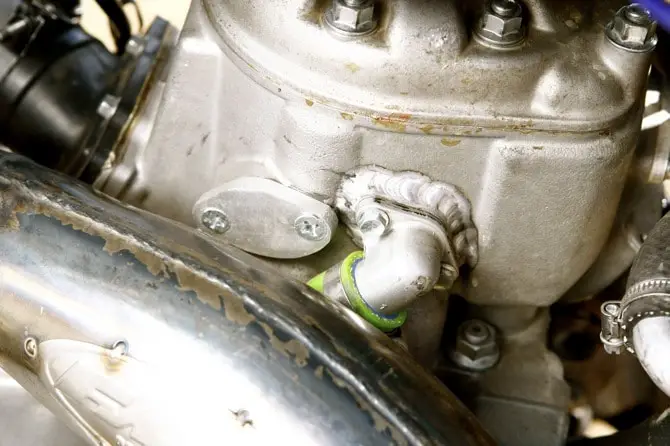





Comments are closed.